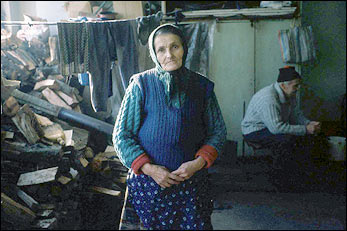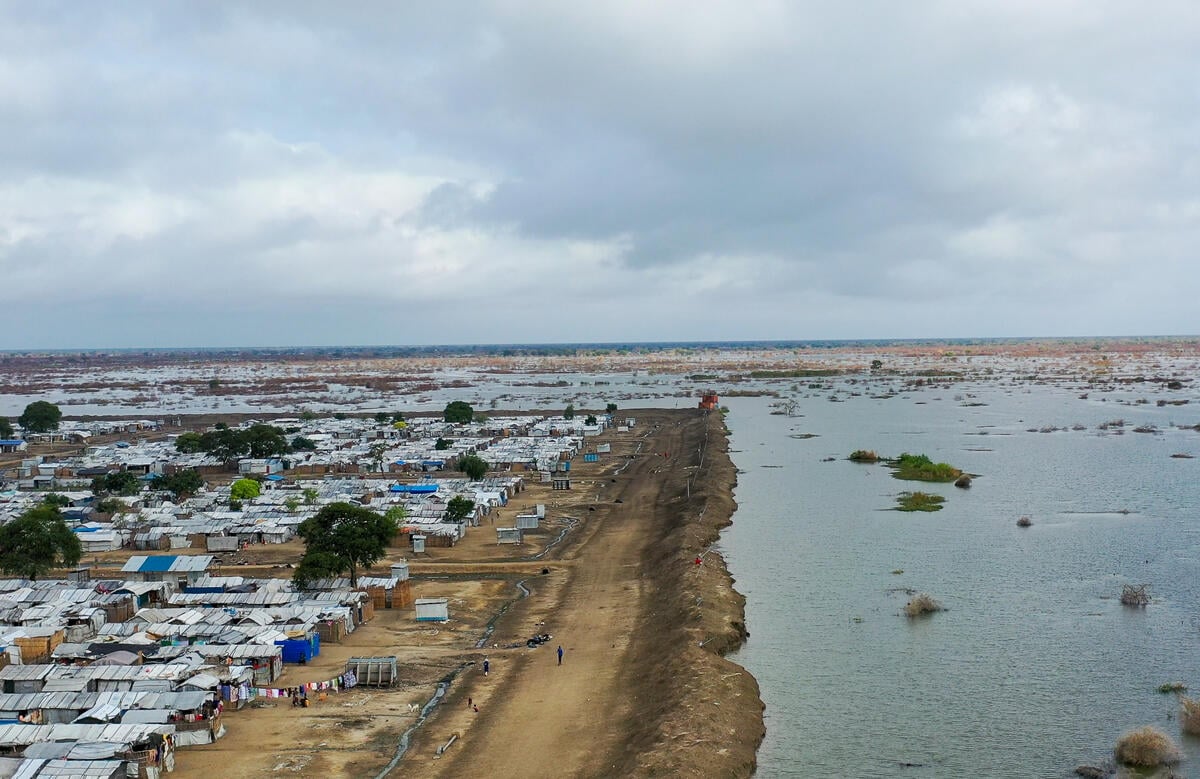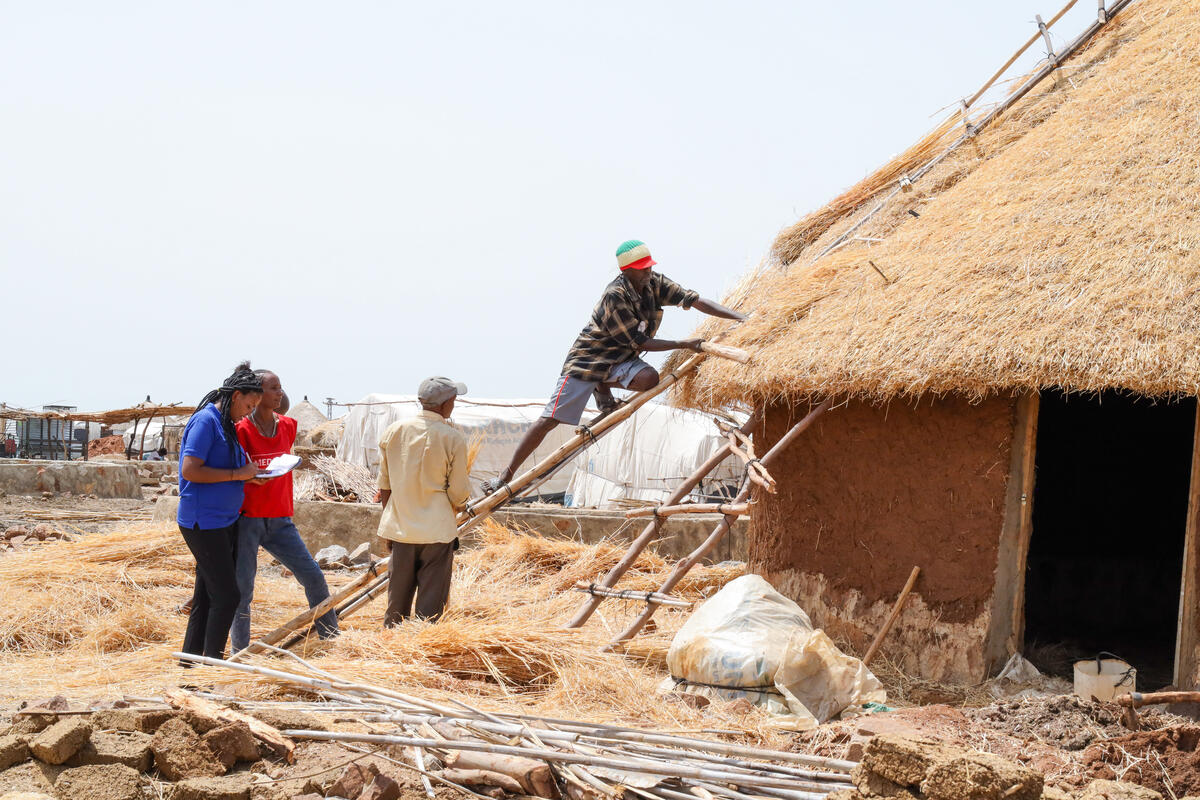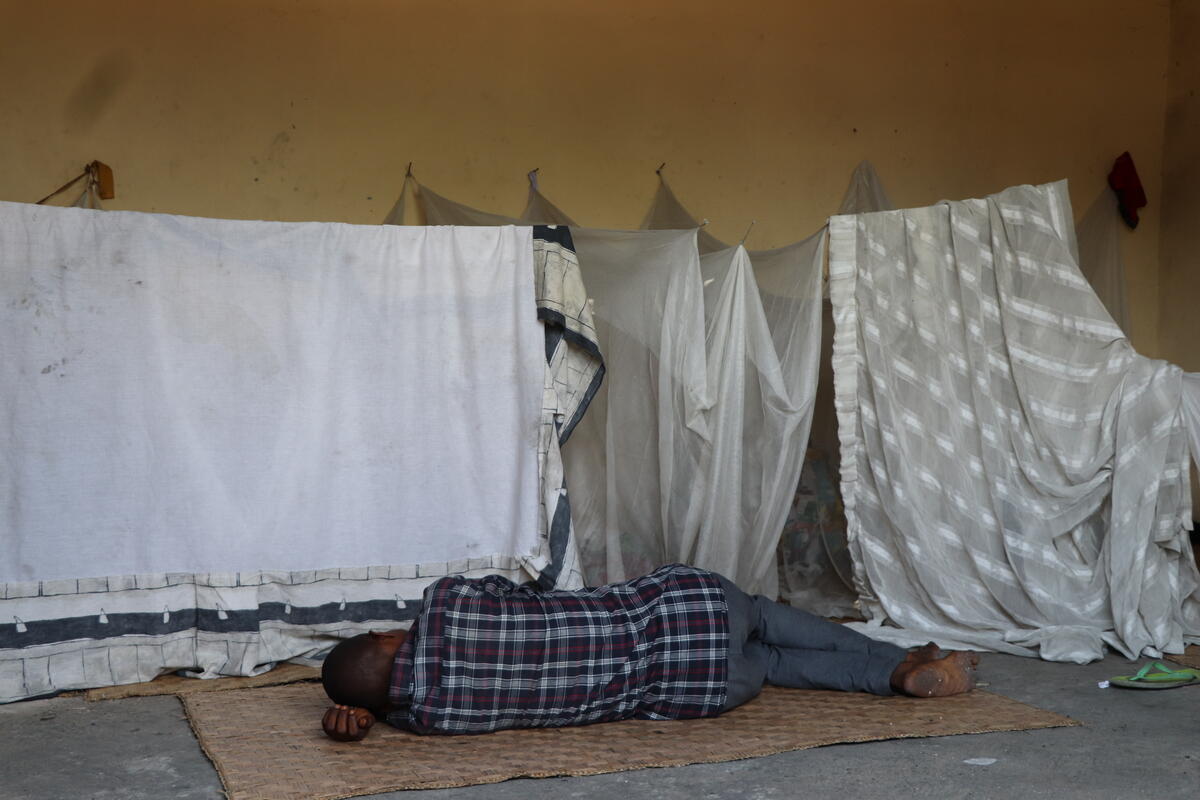Europe development bank funds housing projects in Balkans
Europe development bank funds housing projects in Balkans

PARIS, March 15 (UNHCR) - More than 2,300 people in Bosnia and Herzegovina and Serbia and Montenegro will soon have been enabled to move out of collective centres into individual accommodation after the finalisation of a Memorandum of Understanding between the Council of Europe Development Bank (CEB) and the UN refugee agency.
Signed in Paris on Monday, the MOU sets out a framework for cooperation between the two institutions, committing some $3 million in grants over a five-year period as well as training for UNHCR staff in the design, planning and monitoring of an 8 million loan from the bank to the government of Bosnia and Herzegovina. Both the grants and the loan, which were developed in parallel, are focused on building or rebuilding homes for displaced people in the two countries.
The MOU is in line with one of the bank's statutory priorities - to promote projects that address social problems faced by European countries as a result of the presence or forced movement of refugees, displaced persons or migrants, through social housing, educational and health projects and job creation. It is also based on the conviction that UNHCR's work is more effectively conducted when persons of concern are included in development plans.
"This is the first agreement of its kind with a major European development bank, and marks a big step forward in the effort to bring more development funding into the picture when it comes to providing solutions for refugees and displaced persons," said UNHCR spokesman Rupert Colville in Geneva on Tuesday.
According to Colville, the MOU has already proved immensely beneficial to some of the people who, 10 years after the Dayton agreement, have still not found a permanent solution to their displacement in Bosnia and Herzegovina and in Serbia and Montenegro.
Last year, the bank gave UNHCR a direct grant of $1 million to provide permanent housing for 1,081 former residents of collective centres in Serbia and Montenegro and a further 55 people in Bosnia and Herzegovina. In some instances, one-time assistance (including furniture, like beds or refrigerators) was also given to people who wanted to move out of collective centres and into rented apartments.
"This has proved to be excellent assistance to extremely vulnerable beneficiaries who would not be able to establish a coping mechanism once they left the security of collective centres," said Guido Ambroso, UNHCR's Senior Desk Officer for South-East Europe. He said that in Serbia and Montenegro the planned 2005 grant, if approved by the CEB, would cover the construction component of the local integration and in-kind assistance kits for refugees living in poor private accommodation, as well as for those leaving collective centres that the Serbian Commissioner for Refugees is planning to close this year.
To supplement the local integration efforts, UNHCR has established an income-generating component through the provision of micro-credits and vocational training for eligible beneficiaries, Ambroso added.
In Bosnia and Herzegovina, those who have already benefited are naturally delighted that they have finally been given the opportunity to lead a more natural existence after so many years in collective centres.
"I am so happy for my child that we now have a roof over our heads that we can call our own. My daughter can now feel safe and we can begin to build a proper future for us," said Sala Jamakovic, who moved from a collective centre in Jablanica, to a new house in her home village of Zlate in November 2004. The six new houses in Zlate were all paid for out of the CEB grant.
This year, the refugee agency has requested another $1 million for similar housing and start-up assistance for vulnerable displaced families in both countries.
"Perhaps more importantly, following the same theme and model worked out with UNHCR, the bank has also reached an agreement with the Bosnia and Herzegovina government to provide an 8 million soft loan to build accommodation for the remaining people living in collective centres," noted Colville. "The Bosnia and Herzegovina government will itself contribute 4 million in matching funds from its own resources."
Although UNHCR is not involved in the funding or implementation of this project, it will determine who should benefit and help monitor the loans to make sure they reach the estimated 1,200 beneficiaries.
"UNHCR will work closely with the Bosnia and Herzegovina ministries and the CEB in the implementation of the loan over the next two years," said Udo Janz, UNHCR Representative in Sarajevo.
As a member of the European Development Bank, Bosnia and Herzegovina is entitled to loans while non-member Serbia and Montenegro can so far only receive grants.

While the Bosnia and Herzegovina loan will first of all target the 734 people currently living in the 13 remaining official collective centres, UNHCR hopes that similar solutions can be found for the remainder of the 7,000 displaced people living in unofficial centres in the country, Colville said. Several hundred of these will already benefit from the existing loan.
At the time of the 1995 Dayton Agreement, there were around 45,000 displaced people living in some 300 officially recognised collective centres in Bosnia and Herzegovina. The great majority of these people have now returned to their homes.
In January, the governments of Bosnia and Herzegovina, Croatia, Serbia and Montenegro reached an agreement to close the refugee chapter in south-eastern Europe by the end of 2006 through voluntary return or local integration.








